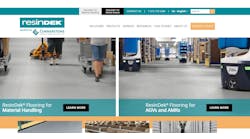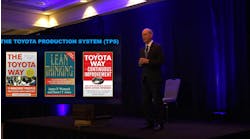Why Won’t My Suppliers Do It My Way?
As you shift from paper to digital processes, try to understand where your suppliers are coming from and what you can do to make their lives easier.
When buyers and suppliers interact, paper still rules. One study by AP Moeller Maersk found that the shipment of one container from Kenya to the Netherlands required over 200 document exchanges between 100 different people, generating a paper pile 10 inches high. A separate study conducted by Payments Journal found 70% of supplier invoices still come through the mail.
Large buyers, keen to reduce the cost associated with processing millions of paper and PDF invoices, have been trying to bring about a change for years. The pandemic has strengthened their resolve. Mckinsey reports that between January and October 2020, the digitiation of supply-chain interactions and internal operations among large organizations accelerated by three to four years.
Yet getting suppliers to endorse and adopt change is far from a given. Boston Consulting Group claims that up to 70% of digitalization projects fail to achieve their objectives, with low adoption rates among external business partners often to blame.
Where buyers see transparency and efficiency as the obvious and compelling benefits of digitalization, suppliers often see cost, hassle and yet another portal to contend with just so they can get paid what they’re owed. It’s no surprise then that many suppliers simply carry on doing what’s familiar.
Here are the top three things any manufacturer should consider before embarking on a supplier onboarding project:
1. Come Bearing Carrots
When buyers impose a “digital” element such as e-invoicing, they might think they’re making life easier for everyone, but more often than not, the supplier views it as extra work for someone else’s benefit.
Financial institutions have saved billions by getting consumers to go paperless. They did this by presenting a clear value proposition to the audience they were trying to influence. Going digital would give customers a real-time view of their finances, help them address issues quicker and open up a range of additional services to them at the touch of a button.
There’s an important lesson here: if you want to influence behaviors, then carrots are far more effective than sticks. Projects are more likely to succeed if buyers can approach suppliers with a clear value proposition, whether that’s greater transparency over where an invoice sits in the approval cycle, faster issues resolution or even early payment options for businesses that sign up.
2. Make Value Personal and Instant
Before you embark on any onboarding process, take time to talk to your technology partner to understand what the first communication with your suppliers will look like. If the first email they receive contains nothing more than a generic list of instructions, don’t be surprised if you receive a disappointing response.
One of the most significant breakthroughs for us came when we began to personalize the initial communication with suppliers by providing them with a range of data points and insights including the status of any current invoices, payment due dates and the total amount owed in outstanding invoices.
Above all, understand what your suppliers really care about and frame any communication with them through that lens. According to Ernie Martin, founder of Receivables Savvy, three things that matter most to suppliers are the ease with which they can send a document, the ability to understand where that document is in the process and most importantly, swifter payments. Before you send any communication out to suppliers, make sure those points are front and center.
3. Don’t Try to Eat the Elephant
Divide your supplier base and thus your invoice volume on the basis of two factors—the amount of spend and the ease of going electronic. Some suppliers will automatically be your topmost trading partners and will be technically more ready to get going with digital invoices. Prioritize them for paperless e-invoicing and facilitate alternate methods of eliminating human intervention for the rest. For example, some technology vendors will convert PDF invoices from a supplier into a digital invoice, enabling organizations to reach their objectives faster while giving the supplier more time to transition.
Tailor the timing and content of communications to ensure you’re engaging the right supplier at the right time—for example, by reaching out only to active suppliers, and only suggesting they come on board when you can demonstrate a clear and quantifiable benefit.
4. Be an Active Partner
Regardless of how simple your supplier onboarding process is, there will always be multiple steps, requirements, and documentation that needs to be completed. Identifying a single point person, ideally someone with a blend of technical and procedural skills, to manage the tasks and progress of the onboarding experience can help to create accountability and streamline your process.
Problems tend to develop quickly when organizations fail to ensure operational teams understand the scope and objectives of the project early on. Engage with every stakeholder, both internally and with partner organizations, so everyone involved fully understands what they’re going to get from using the platform and how to use it to best effect.
Your technology partner should take on a lot of the responsibility for engaging and training suppliers, but don’t be surprised if suppliers end up defaulting to you when they have a question. Cross-functional alignment with IT, treasury, procurement and even with business requesters helps ensure everybody knows what message to communicate at what stage and how to handle objections and resistance at any given time.
5. A New Kind of Relationship
Above all, it’s vital everyone understands that these projects are not about doing the same old tasks “electronically”. Sure, one benefit of digitization is process efficiency and automation, but the true value of these projects goes much deeper.
Digitalization is the key to unlocking a far richer, more collaborative and ultimately more human relationship between large organizations and their suppliers. Like the beginning of any good relationship, it starts with both sides feeling that what they’re taking away from it is worth the effort they’re putting into it.
Christophe Lemaitre is a specialist in helping large organizations build effective supplier engagement strategies in support of their digitalization objectives. He holds a Masters in Business Administration from the University of Arkansas. He is team lead, Onboarding Strategy, Tradeshift.




